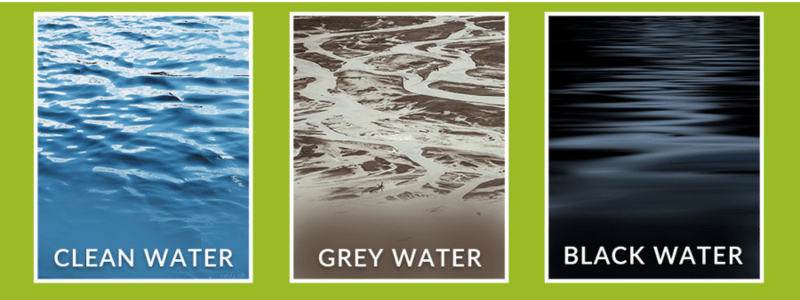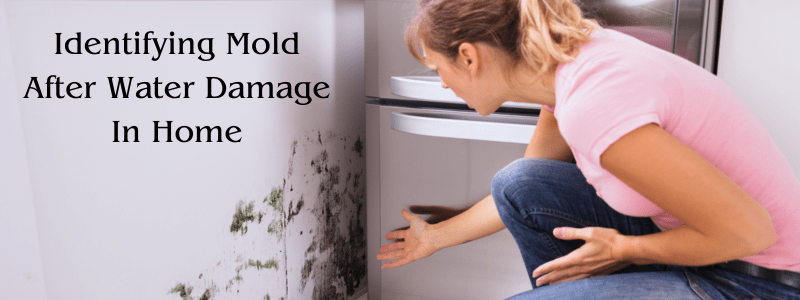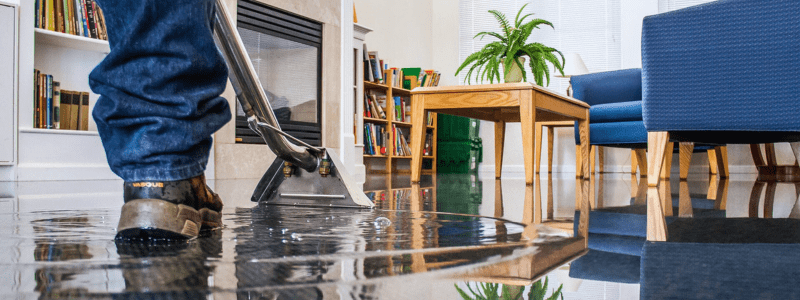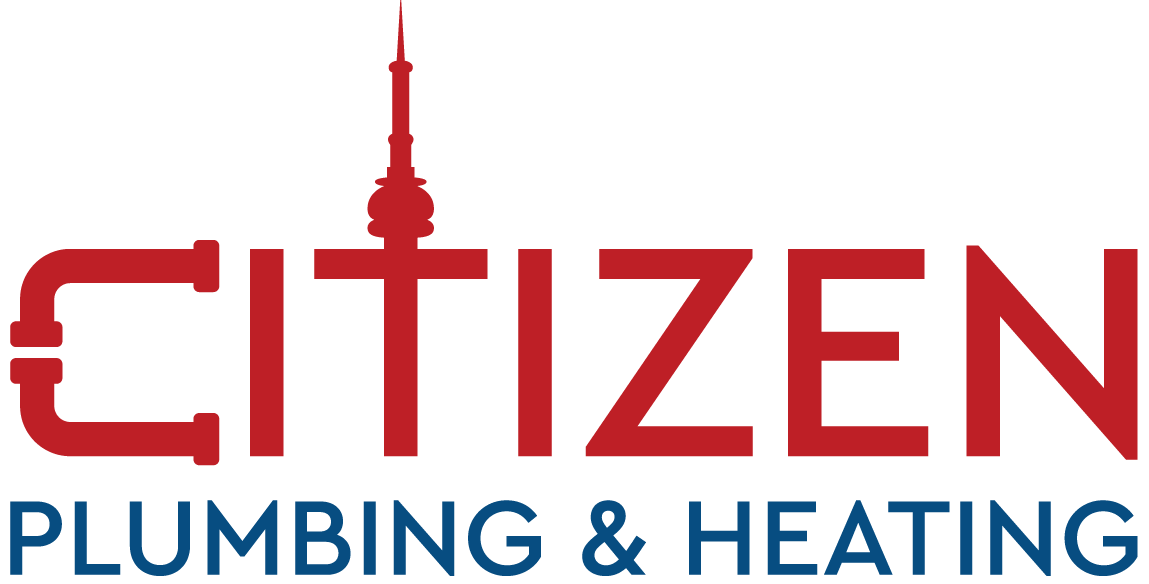Water is the fluid of life. We all know this, right? We use water in countless chords. It helps us with cleaning, showering, cooking, staying hydrated, and whatnot! But sometimes, it can be one of the most destructive forces to damage your property and valuables. In order to mitigate water damage, you have to know how to handle water problems and minimize water damage to ensure healthy living for yourself and your family!
Water damage is a serious issue that can significantly harm your property and disrupt your daily life. From flooding to leaks, there are a variety of issues that can cause water damage in your home. Since we cannot avoid these incidents, knowing how to handle water damage thoroughly is the best thing we can do.
Firstly, there is water that damages your furnishings, appliances, fixtures, and electronics. Then comes the hassle of dealing with the serious aftermath like mold and mildew growth which contains severe threats to your health and causes structural damage to your home. Needless to say, you also have to deal with expensive water damage repair and restoration costs. Worried?
Fear not! We are here to help you with handling water problems efficiently and how you can minimize water damage. Our comprehensive blog will guide you through categories of water damage you might face, essential steps to water damage cleanup, and effective tips for water damage mitigation.
Categories of Water Damage
Before tackling the water problems, it’s extremely important to know about categories of water damage. While some damages are okay for you to handle, some possess serious health concerns.
Institute of Inspection Cleaning and Restoration Certification defines 3 categories of water damage. Knowing the extent of the damage will help you to plan further steps to water damage restoration.

Clean Water
Category 1, or clean water, refers to water that doesn’t threaten human health but can cause harm to valuables. This type of water damage can happen by broken water supply lines, a broken toilet tank, a faucet, or a leaking water heater. Basically, any kind of water that doesn’t contain health risks but can damage your property and belongings.
While Category 1 water damage poses the least risk, it can quickly escalate into a Category 2 or 3 situation if it’s left untreated for a long period or comes into contact with any contaminant. To prevent Category 1 water damage from increasing in severity, you should always take care of it as soon as possible. In fact, this is a general rule for any sort of water damage at all.
Grey Water
Category 2, or grey water, means contaminated water that could cause discomfort or illness if ingested. This type of water contains different microorganisms like bacteria or viruses. Grey water can come from a washing machine overflow, a broken toilet, or broken sump pumps.
Similar to Category 1, these situations can quickly escalate into Category 3 if not properly taken care of promptly. But be careful when dealing with Category 2 water damage and take necessary safety precautions before proceeding.
Black Water
Category 3, or black water, includes gross unsanitary water, as it contains the most bacteria and other harmful organisms that pose a significant risk of sickness. This contains human waste, sewage water, and other contaminants putting your health at risk of severe illness.
Black water exposure can cause nausea, vomiting, diarrhea, and other harmful health effects. The possible sources of black water damage include dirty toilet water, flooding from rivers or streams, wind-driven rain, contamination of standing water, etc.
You must use gloves and masks when dealing with black water. Wash yourself thoroughly right after work. We recommend hiring a professional water cleanup service in Toronto.
Identify the Source of the Water Problem
The first step in handling water problems is to identify the source of the problem. But finding the source of a water leak might be trickier than most people realize. Undetected hidden leaks are a common reason for most water problems in homes.
That’s why finding and fixing them is very crucial before they result in rot and other costly damage. Toilet, ceiling, wall, and cabinetry leaks are the first places to look for. Once you have identified the water source, you have to stop the water flow by turning off the main water supply.
But calling a water damage restoration or leak detection business is easier and more cost-effective than tearing up your floors, drilling holes in the walls, or tearing out cupboards. They possess the knowledge and specialized tools required to locate a leak’s source.
Additionally, they’ll assist you in creating a plan to remedy the leak and the dampness. Check out this blog to learn how to choose a plumber that fits your budget and needs in Toronto.
Water Damage Mitigation Tips
Water damage can be devastating to your home and personal property. But it’s important to be calm and handle the situation swiftly to minimize the water damage. Here are some tips so that you can handle the water damage cleanup and save your valuable property.
Call Your Insurance Company
The first thing you need to do when you have identified the water damage is to call your insurance provider so you can gain financial coverage. The policies may vary on different types of insurance providers, but most cover the damage on your home.
The insurance company will send an adjuster to inspect the damage, evaluate it, and decide whether the loss will be covered or not. Take as many pictures as you can before, during, and after cleanup from different angles. This will be helpful when the adjuster evaluates the damage.
Protect Your Valuables
You can’t just sit around and wait for the water damage restoration service to arrive. Notice if you have any wood furniture or carpet where water can reach and cause damage. Move the wood furniture to a dry place. You may insert tin foil under your feet to prevent carpet staining.
Likewise, remove any rugs that may be on wet flooring.
If the flooding is bad enough, you may be forced to leave your home until the professionals arrive. But protecting your valuable documents and furniture instantly will help you minimize a lot of damage.
Turn Off The Electricity
If you notice water approaching any electrical appliances, turning off your electricity from the main circuit is crucial. You know, if water ever comes in contact with electricity, it can increase the chances of your family members getting electrocuted.
In order to prevent that, you must turn off the electricity supply as soon as you notice any water damage and ensure the safety of all your beloved family members.
Identifying Mold
After discovering water damage, you should promptly identify mold and prevent it from spreading. Mold can begin developing after the first 24 hours of a flood, and once it has started growing, it can be difficult to remove.
The quicker you remove items from the water and dry them, the less likely they will be lost to mold. But be careful not to spread mold spores throughout the house when you are trying to dry things out.

We already talked about how mold can severely affect your health by causing respiratory issues and also can damage your home from the very core, forcing you to do expensive repairs. That’s why you shouldn’t take chances with mold can have a professional mold remediation service to assess the situation.
.
Extract The Water
Once you have turned off the electricity and taken precautions to safeguard your valuable properties, the most important step is extracting the water. If there is standing water, use a wet/dry vacuum to extract as much water as possible.
Open windows and doors – Open windows and doors to improve air circulation and speed up drying. If you have a sump pump installed, it will help you to extract the water faster. However, you risk electrocution and perhaps death if you can’t plug in a dehumidifier or a sump pump from dry land.
If you don’t have the advanced equipment and water is draining fast, contact an expert plumber to tackle the situation efficiently.
Use Fans and Dehumidifiers
The main objective is to dry out water as soon as possible. You can use fans and dehumidifiers to dry out the affected area.
A dehumidifier can be used to eliminate water held by house structures. It can also assist you in removing any difficult-to-remove water or moisture. It is a necessary tool for preventing subsequent damage. Warping and rotting of the floor, walls, and furniture are examples of such damage.
Flood water might also disrupt your home’s humidity levels. You can adjust the humidity level in your home by using a dehumidifier. According to Healthy Habitats, it will assist you in reducing the humidity level to 40-50%. It should be noted that a level of more than 50% will result in mold growth. A level of less than 30% will result in structural deterioration.
Water Damage Repair and Restoration
Once the water has been extracted and the affected area has dried out, it’s time to repair and restore the damage. Here are some tips for repairing water damage:
Assess The Damage
Before beginning any repairs, assess the extent of the damage. This will help you determine what repairs need to be made and what materials you will need, and it will also help you to get an idea of the costs you may have to bear.
Remove any damaged materials that cannot be salvaged, such as drywall, insulation, and flooring. Hire a professional water damage restoration service to restore the damaged goods.
Disinfect And Clean
Even if you have removed all of the flood waters, the water damage restoration work is not over. Sanitation of all impacted areas is critical to preventing mold and bacterium growth.

If your building is properly disinfected and cleaned, the air is safe to breathe, and the structures are safe to touch.
Replace Wood
All significantly warped wood (especially flooring), decaying wood, and wood with mold/mildew concerns must be replaced. Before repairing broken boards, pry them apart and thoroughly clean them.
If the wood is the primary structural component of your home, you must take extreme caution when replacing it to ensure that the structure is properly supported before and after the water damage repair job.
Spray Antimicrobial
This is usually an optional service that you might wish to consider. Even if you rapidly took necessary actions to remove water from your home, mold can hold on to the dampness. You won’t even notice until it is already causing severe damage.
Furthermore, standing water may have come into touch with black water (sewage), cat litter, the toilet, or even shoe residue, where bacteria might settle on the floor in other rooms.
For these reasons, technicians will spray anti-microbials in your home to destroy any such germs before they might cause illness in your family.
Hire A Professional
If the damage is extensive, consider hiring a professional water damage restoration company to handle the repairs and restoration.
You might think of saving some bucks and doing it all on your own. But you lack the experience, and chances are you might end up messing things up even more, causing you more money. That’s why hiring a professional water damage repair service is necessary. Their experience and expertise will guide you to lessen your stress and get the restoration done efficiently.
Conclusion
In conclusion, water is a formidable force that can wreak havoc on your property and disrupt your daily life. From the potential destruction of furnishings and appliances to the growth of mold and the risk of structural integrity issues, water damage poses significant threats. However, by understanding how to handle water problems and minimize the damage, you can protect yourself, your family, and your valuable belongings.
This comprehensive blog has provided essential insights into different categories of water damage, including clean water, grey water, and black water, helping you assess the severity and take appropriate action. It has emphasized the importance of identifying the source of water problems, highlighting the expertise of professionals in leak detection and restoration.
Furthermore, we have also shared valuable water damage mitigation tips, such as contacting your insurance company promptly, protecting your valuables, and turning off the electricity to ensure safety.
The blog has also emphasized the need to identify and address mold growth and the critical steps of water extraction, using fans and dehumidifiers, and ultimately undertaking the repair and restoration process. While some minor repairs can be handled independently, hiring a reliable water damage restoration company for extensive damage is highly recommended to ensure the job is done effectively and to avoid potential costly mistakes.
By following the guidance in this blog, you can confidently navigate the challenges of water damage and minimize its impact on your life. Remember, swift action and proper handling are key to preserving your property, ensuring a healthy living environment, and mitigating the financial burden of extensive repairs.






 by
by